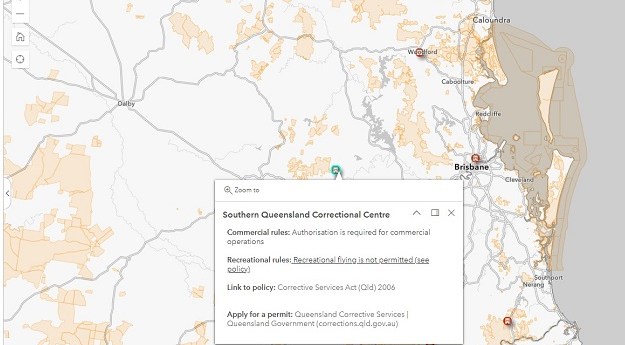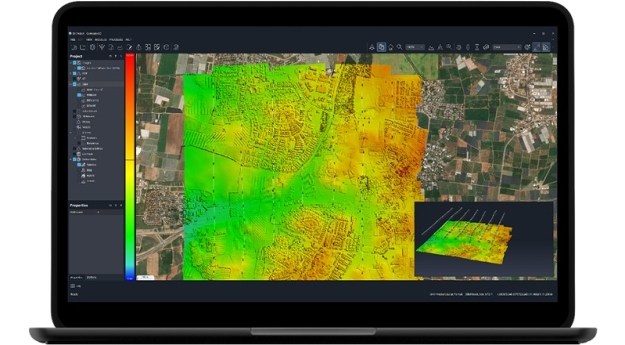
UNSW-EC0, built by UNSW’s Australian Centre for Space Engineering Research and one of the three Australian satellites launched overnight.
Australia is back in the space race, following the launch of three miniature satellites. At 1am Sydney time on Tuesday 19 April 2017, three Australian research cubesats blasted off for space as part of a NASA mission to resupply the International Space Station.
The event marked the first launch of an Australian-built satellite for 15 years. It is also the nation’s first foray into cubesats for a host of new applications, from scientific discovery to remote sensing and satellite navigation.

The Atlas 5 rocket launched from Cape Canaveral Air Force Station in Florida Tuesday night. Photo: NASA
The trio of Australian cubesats is part of the international QB50 mission, consisting of 36 small satellites known as ‘cubesats’. Each instrument weighs about 1.3 kg each and is about the size of a shoebox. The combined effort will carry out the most extensive measurements ever undertaken of the little-understood thermosphere, a region between 200-380 km above Earth. This usually inaccessible zone helps shield Earth from cosmic rays and solar radiation, and is vital for communications and weather formation.
Twenty-eight of the QB50 satellites, including the three Australian cubesats, were aboard the Atlas 5 rocket when it launched from Cape Canaveral Air Force Station in Florida overnight. The three Australian cubesats are UNSW-EC0, built by UNSW’s Australian Centre for Space Engineering Research (ACSER); INSPIRE-2, by the University of Sydney, UNSW and the Australian National University; and SuSAT, by the University of Adelaide and the University of South Australia.

ACSER Deputy Director Dr Elias Aboutanios holding the UNSW-EC0 cubesat before its launch. (Credit: Grant Turner/UNSW)
The UNSW-EC0 Cubesat comes after 40 years of Australia’s non-participation in satellite building,” said Andrew Dempster, director of ACSER, and a member of the advisory council of the Space Industry Association of Australia. “These are the first Australian satellites to go into space in 15 years.”
“There have only been two before: Fedsat in 2002 and WRESAT in 1967,” he explained. “So we’ve got more hardware in space today than Australia’s had in its history.”
While the primary objective of the QB50 mision is to better understand the thermosphere, there are many further applications set to arise from the undertaking. In an official announcement, UNSW predicts that the industry is on the cusp of a civil space revolution that could cheaply exploit space for applications such as rural internet access, satellite imaging and remote sensing.
UNSW’s EC0 carries an Ion Neutral Mass Spectrometer instrument to study the composition of the thermosphere, in addition to a number of additional payloads and mission objectives. Among them is the Namuru GPS, a satellite positioning study led by Andrew Dempster to improve the accuracy and reliability of GNSS positioning for satellite operations and ‘formation flying’.
The payload of cubesats is expected will reach the International Space Station in the coming days. The QB50 mission’s next step will take place in May, when the first 20 cubesats – including Australia’s INSPIRE-2 and SUSat – will be deployed from the International Space Station. Over time they will drift to a lower orbit and begin their measurements from the thermosphere. Around June, the remaining seven other cubesats, including UNSW-EC0, will then be deployed.
Also aboard the Atlas 5 rocket is Biarri Point, a cubesat for defence applications tests that carries new GPS technology developed by UNSW’s ACSER and Australia’s Defence Science and Technology Group (DST). It is part of a four-nation defence project between Australia, the US, the UK and Canada that will see the launch of another two cubesats over the next year. Biarri carries a GPS technology payload developed by UNSW and integrated into the satellite by DST will conduct a range of experiments involving Australian facilities such as Mount Stromlo Observatory in Canberra. The remaining eight QB50 cubesats will be launched separately into orbit by an Indian rocket later in May.
QB50 is a collaboration of more than 50 universities and research institutes in 23 countries, led by the von Karman Institute for Fluid Dynamics (VKI) in Belgium and funded by the European Commission.
“This is the very first international real-time coordinated study of the thermosphere phenomena,” said VKI’s Davide Masutti. “The data generated by the constellation will be unique in many ways and they will be used for many years by scientists around the world.”












